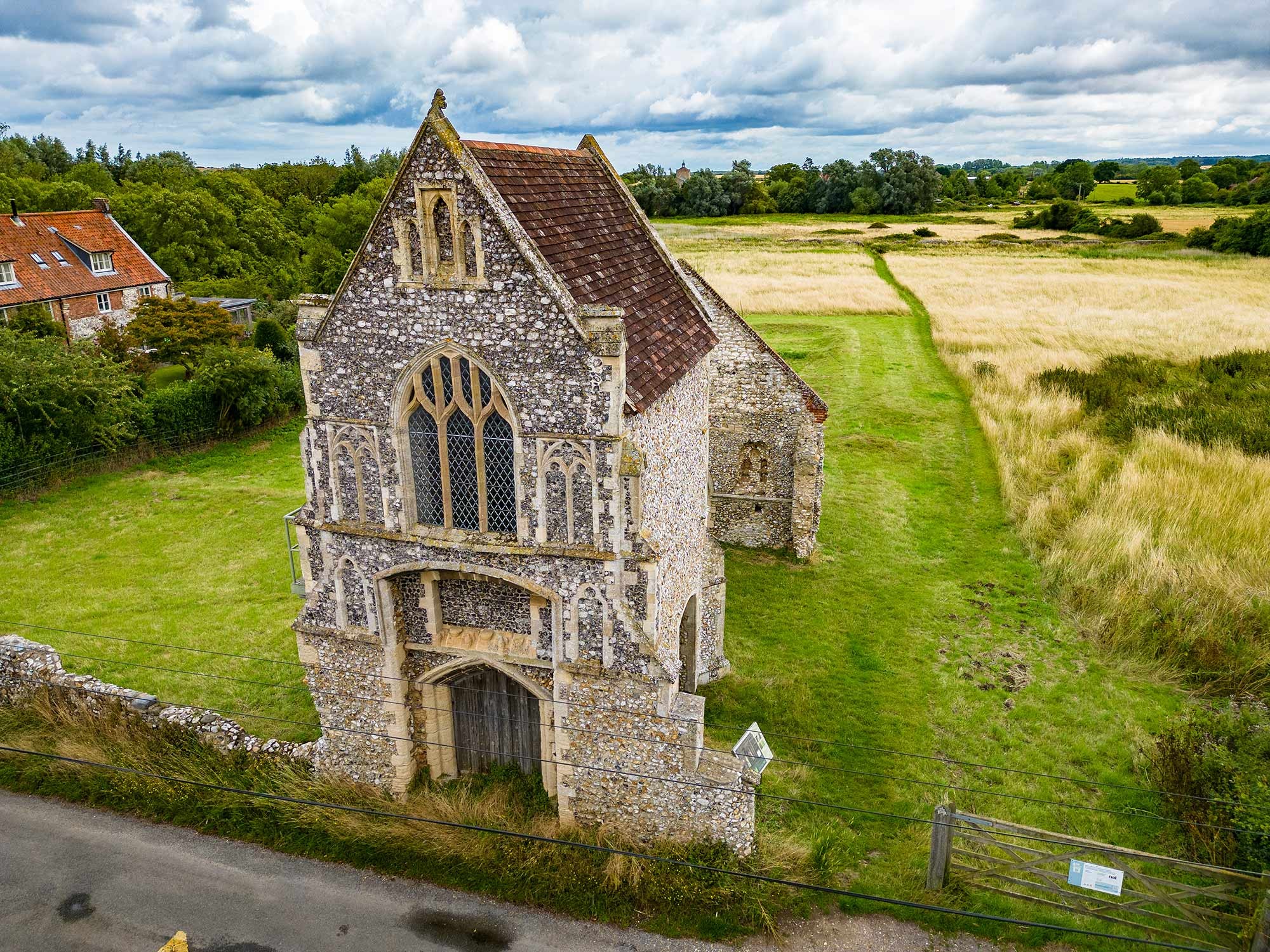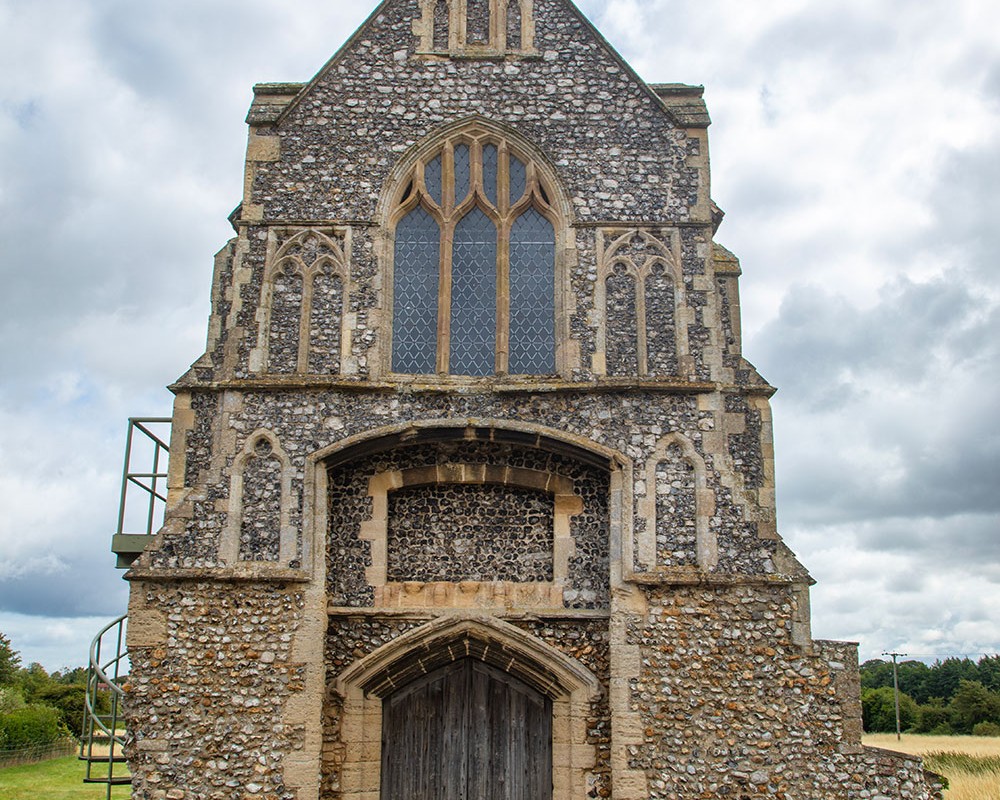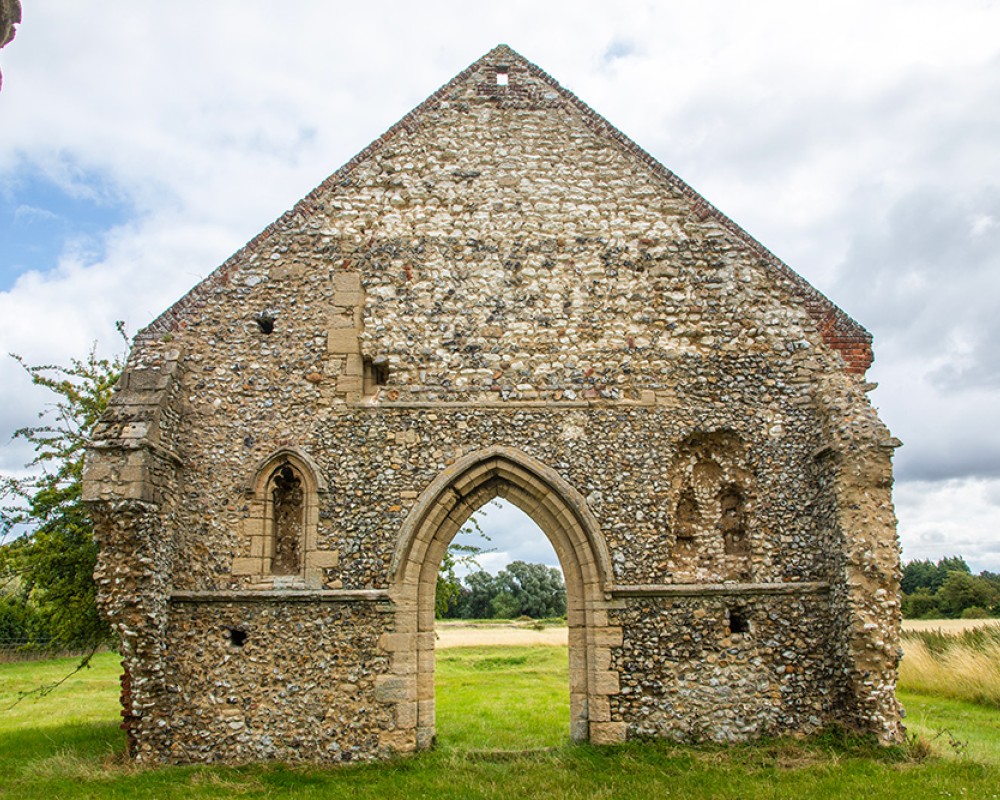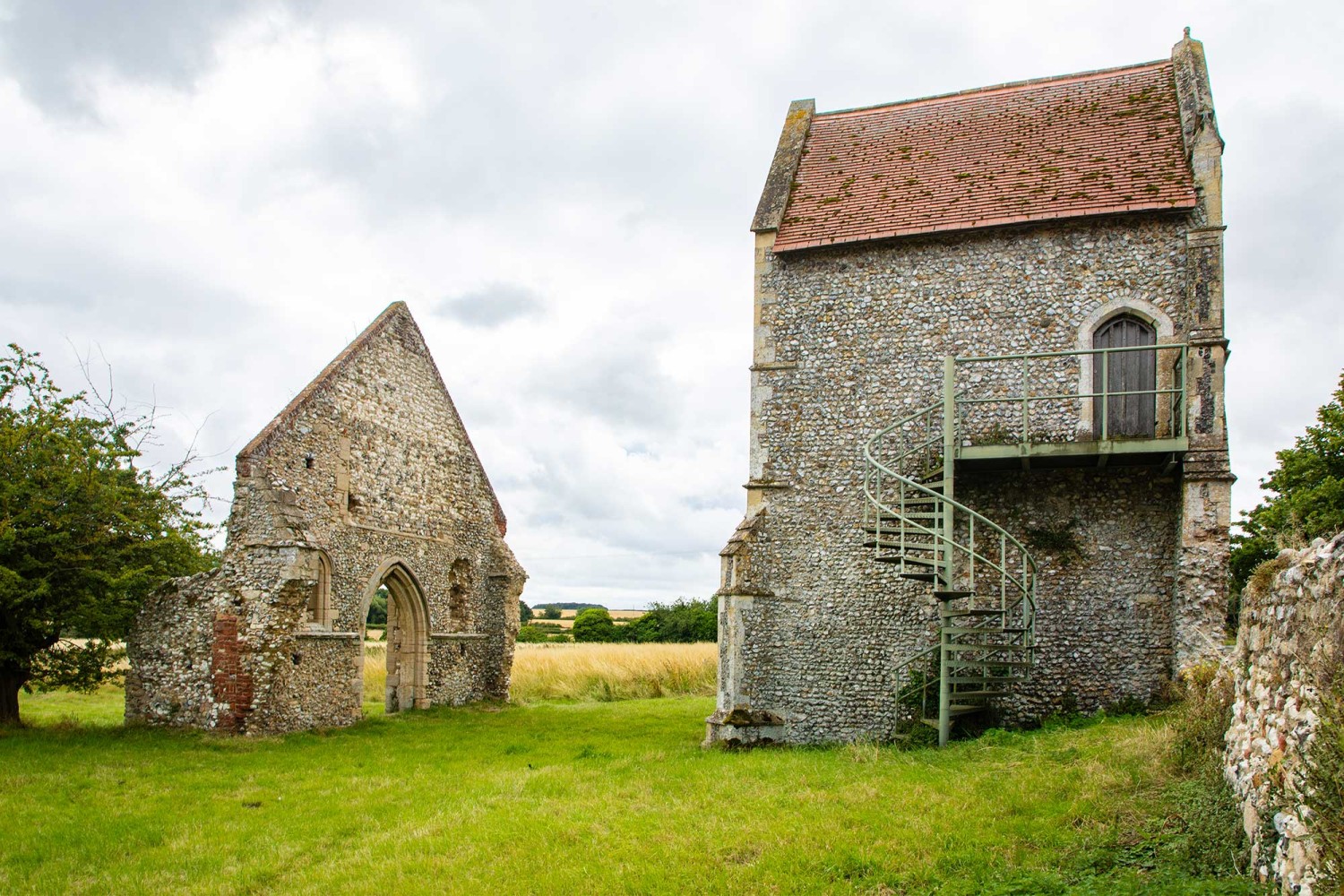
Uncovering the hidden history of Burnham Norton Friary
This symbolic landmark may now be only ruins and a solo gatehouse, but there’s still much to learn about the friars of Burnham Norton and what became of the friary after they left
Just south of Burnham Norton, tucked away down Friar’s Lane, is the last remnant of what was once a home to Carmelite friars for nearly 300 years. The fine
gatehouse still standing is thought to have been built in the 14th century and would’ve been a later addition to the site.
The Carmelites formed one of the four great mendicant orders of the Roman Catholic Church, alongside the Dominicans, Franciscans, and Augustinians. They were originally hermits who resided on Mount Carmel in the Holy Land, living in separate cells and observing vows of silence, abstinence and austerity. However, the Carmelites faced harsh persecution in the 13th century and were forced to flee from their tranquil homeland in around 1238.
Those who settled in Europe struggled to reconcile their solitary natures with their new surroundings. They were often met with hostility from other mendicant orders, who viewed them as competition. The Carmelites were required to adjust from a reclusive way of life to a communal one in order to continue their work, thus becoming friars.
Burnham Norton was the fourth Carmelite house in England and the first in Norfolk, founded by Sir William Calthorp and Sir Ralph Hemenhall in 1241. The friars depended on charitable donations from the public, and as there was growing support for their commitment to poverty and preaching, they were able to operate from Burnham Norton for several centuries. The friary is thought to have served as a place for pilgrims to rest as they travelled to the shrine at Walsingham and became an important part of the local landscape, with two separate licences for expansion granted by the early 1500s.
However, this holy treasure sadly met its end during the Dissolution of the Monasteries under King Henry VIII. In 1538, when it was occupied by only four monks, the king granted the friary to Sir Richard Gresham and it was closed down. Two of the friars who lived at Burnham Norton also suffered tragic fates during the dissolution, becoming implicated in the infamous Walsingham Conspiracy of 1536. Carmelites John Peacock and William Gybson were among a group of men accused of plotting an uprising against the king to defend the monasteries. William was sentenced to life imprisonment but John met a more brutal end, being hanged, drawn and quartered in King’s Lynn in 1537.
What happened to the friary after the Dissolution is not as well documented, but one dedicated local historian has been working hard to uncover forgotten pieces of its past. In her captivating recent book, Dr. Sally Francis explores the story of the site through the five centuries after the Carmelites left.
Stone from the site was later recycled into buildings in Burnham Norton. These included a malthouse


“I grew up in Burnham Norton and attended the primary school opposite the friary ruins,” she says. “A few years ago, the Norfolk Archaeological Trust ran a Heritage Lottery funded project called ‘Imagined Land’ to examine the history of the friary before the Dissolution. This piqued my interest and prompted me to find out more about what happened to the site after the friars left.”
Dr. Francis embarked on a journey of research which took her all over the country, from Yorkshire to Cornwall, in search of original sources detailing what had become of the friary.
“There were over 20 owners of the site after 1538,” she explains. “I was able to learn about how they converted this former religious house into a farm and how they finally rebuilt the gatehouse into an ‘antiquarian relic’, whilst demolishing almost all of the other buildings on site.”
Dr. Francis also discovered historical sketches dating back to 1769, which show the gatehouse before its Victorian restoration. The structure is now a stand-alone building, but there were once adjoining walls on both sides which reveal that it once extended along the lane. Enthralling foundations discovered through the Imagined Land project also indicate the presence of an unknown mansion on the site, which would’ve likely housed the friary’s founding family.
Even after its unfortunate closure, the friary brought benefits to the local community. “Stone from the site was later recycled into buildings in Burnham Norton. These included a malthouse, which has sadly now gone,” Dr. Francis says. “I also discovered pieces of cloister windows had been rebuilt into a farm wall in the village.”
Dr. Francis notes that the process of writing this book was a very fulfilling one, even if it wasn’t easy at times. Her in-depth research through countrywide travels took a great deal of time and effort, and the closure of public libraries during the pandemic made it all the more difficult to determine the story of the friary.
It’s a good thing she was successful in her venture, as her enthralling exploration of Burnham Norton Friary sheds light on an enchanting local landmark and brings another piece of our county’s rich history to life.
Burnham Norton Friary After the Dissolution is available online at boydellandbrewer.com and in many local bookshops.

